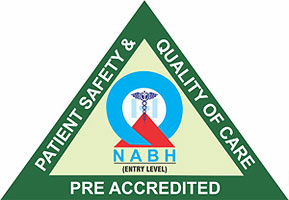+91-7291089674 (Bandra)
+91-7291092120 (Kandivali)




December 7, 2020 | Author: Admin
Retinal detachment is a displacement of the retina from its normal position. There are various causes of retinal detachment. Book an appointment with the best eye clinic in Mumbai if you experience any problem with your vision.
The retina is a layer present at the back of the eye. The retina is vital for vision. Any problem in the retina may cause vision problems. One such problem is retinal detachment. Normally the retina is strongly attached to the underlying choroid layer. In retinal detachment, the retinal tissue starts separating from the underlying layer called the choroid. It may lead to vision loss and requires immediate surgical intervention. In case of retinal detachment, the retina may not be able to get the oxygen and nutrients from the underlying blood vessels. In the absence of nutrients, the retina may not be able to perform its function resulting in vision problems and vision loss.
Depending upon the cause of retinal detachment, the retinal detachment can be of the following types:
Tractional retinal detachment: The common cause of tractional retinal detachment is diabetes. A high level of sugar in the blood damages the vessels supplying the blood to the retina. This results in scarring and fibrosis in the retina. The scar may cause a pull on the retina and lead to a retinal detachment.
Exudative retinal detachment: Exudative retinal detachment occurs when there is a fluid accumulation just behind the retina. This increases the pressure behind the retina, which forces it to separate from its original position. This results in retinal detachment. The conditions that may result in exudative retinal detachment are inflammation, age-related macular degeneration, eye injury, and tumor in the eye.
Rhegmatogenous retinal detachment: This occurs due to the natural aging process. Due to aging the jelly liquid known as vitreous, shrinks and collapses resulting in pulling of the retina. This results in a tear in the retina. Because of the tear, the fluid goes into the back of the retina and creates pressure behind and lifts the retina separating it from the underlying layer called the choroid. This may cause the retina to displace from its position resulting in retinal detachment.
Although retinal detachment may occur to any person, certain factors increase the risk of retinal detachment:
Retinal detachment is an emergency condition. You should immediately consult the eye doctor if you experience the following symptoms:
You should contact the best eye surgeon in Mumbai if you experience any of the symptoms of retinal detachment. Any change in the vision should be evaluated by the best eye doctor in Mumbai. Any delay in treatment may result in permanent damage to your vision.
Risk factors for retinal detachment are age above 50 years, medical and family history of retinal detachment, and extreme near-sightedness. Do not delay in getting a consultation with the eye doctor in case of vision problems.